5 Best Float Fishing Lines For A Better Presentation
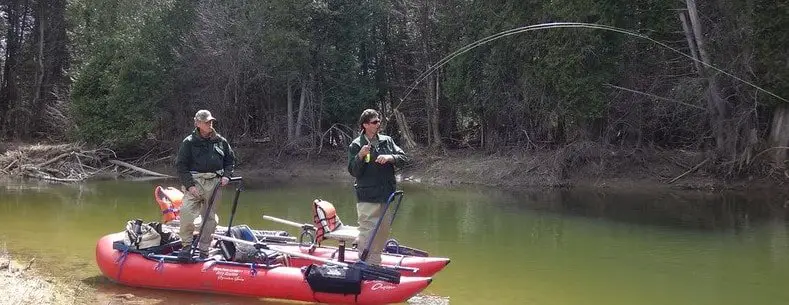
I have been float fishing with spinning reels and Centerpin reels for over 30 years, and as a river guide, I know from experience that some float fishing lines work better than others. After testing out just about every line that guys use for float fishing, I will discuss the best lines and why some are good and some are not.
Key Takeaways
- There are only a few lines that excel for float fishing. Those lines include Raven Mainline, Suffix Elite, Sufix 832 Braid, and Sunline Fine Float.
- I discuss the best line colors because specific colors, such as high-viz lines have advantages, but only if you set up your leader properly.
- The best size of line depends on the species like steelhead, salmon, and trout, as well as the size and speed of the river. I always recommend using the lightest line possible.
- Float fishing mainlines that are more buoyant are much better for presentation, mending, and hook sets.
- Line diameter matters. In my testing, thinner lines cast better and further, they come off the reel better, they tangle less, and they have less line sag between the rod tip and the float, which is a good thing.
Our Quick Picks For Best Lines For Float Fishing
- Raven Main Line – Best monofilament line for Centerpin reels.
- Sufix 832 – Best braided line for Centerpin and float fishing.
- Sufix Elite – Most popular and best for spinning reels.
What Are The Best Float Fishing Lines?
The best line for Centerpin and float fishing that I use on all my steelhead float rods is 8lb Raven Mainline in the high-viz yellow color. The best line to use for float fishing for trout is 6-pound Raven Mainline, and the best line for salmon is 12 pounds.
However, bigger rivers, faster rivers, and bigger fish like what you would find on West Coast steelhead rivers will require heavier lines.
Something else to consider is what species you are fishing for. While an 8-pound line might be great for steelhead and trout in smaller rivers, it’s too light if you plan to fish for salmon in larger rivers.
Using a great fishing line that is actually designed for float fishing, such as Raven Mainline will improve your drifts and prevent some of the problems that can occur when using the wrong line or the wrong size of line.
A good mono line for your float reel or Centerpin reel will be buoyant, lightweight, thin, strong, have low memory, and cast easily. Not all mono lines that I have tested do this well.
Braided lines are also a good option since they are strong, super thin, lightweight, and often buoyant. However, braided lines have some disadvantages, which I’ll discuss below.
Fluorocarbon lines and Copolymer lines are NOT good mainlines for float fishing and for Centerpin fishing reels.
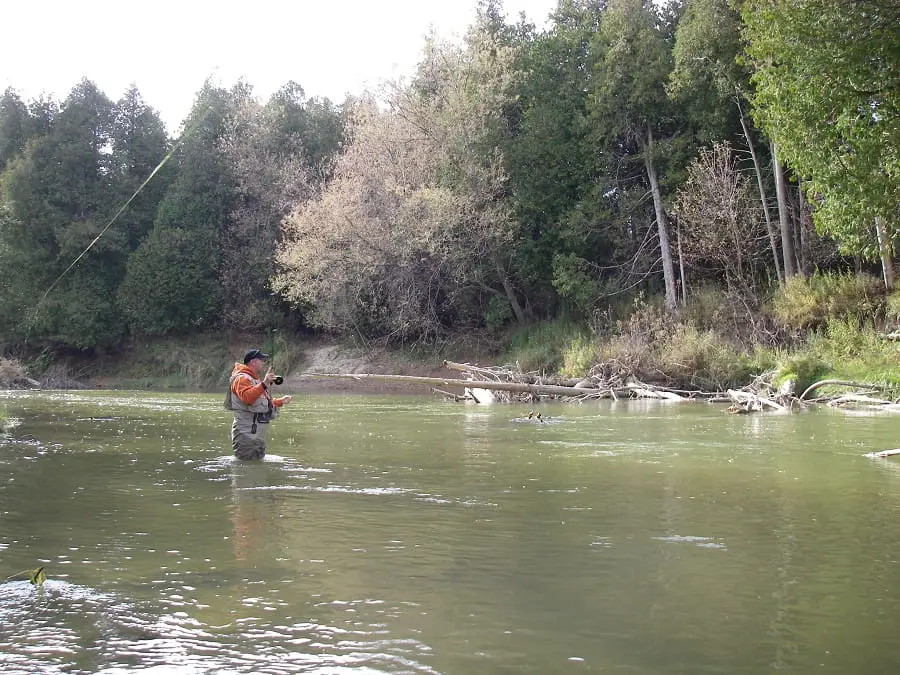
I’ve had my hands on probably over 300 float reels, and I have used just about all the different lines that anglers use when float fishing. Trust me, there is a performance difference between the lines. I will discuss this all below.
The Best Line For Centerpin Fishing
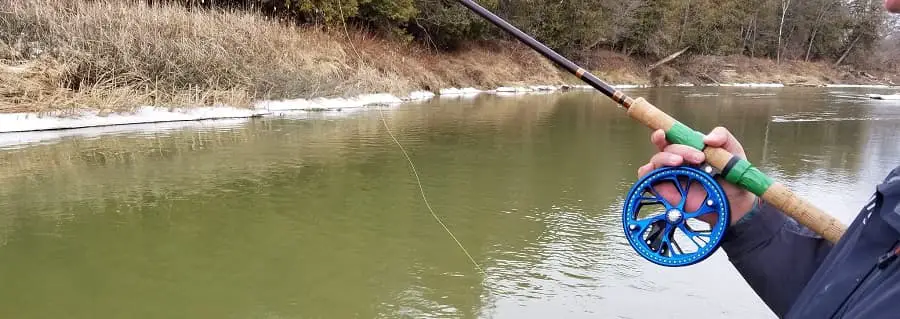
Centerpin fishing is one of my specialties, and for my centerpin, I like lines that are not stiff. The best fishing line for centerpin fishing will need to have low memory, be thin but still strong, be supple, and be buoyant.
The best line for Centerpin fishing for steelhead is the Raven 8-pound or 10-pound Mono Mainline. Upsize to 10 to 12 pounds for salmon in the Great Lakes region and 12 to 14 pounds for the bigger faster rivers on the West Coast.
Another great line that anglers like is Sufix Elite. It’s also a great line for spinning reels.
If you are a trout angler in smaller trout streams, the best Centerpin fishing line is six-pound Raven Mainline.
A mainline is the line on the reel.
The Best Line To Float Fish With A Spinning Reel
I have used a few good lines for float fishing with a spinning reel, but I have narrowed it down to only two lines. The best line for float fishing with a spinning reel is the Sufix Elite Premium Monofilament Line in an 8-pound test for Great Lakes steelhead, or use the appropriate size for salmon and steelhead in larger rivers.
Another great line is the Sufix 832 Braided line.
5 Best Float Fishing Lines
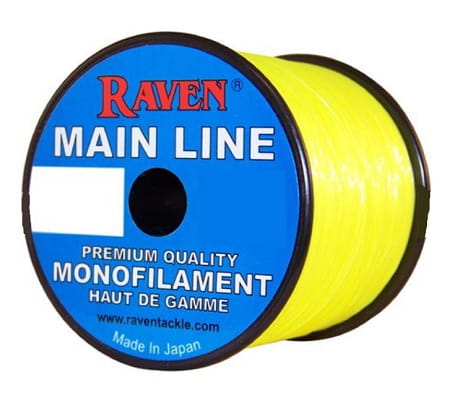
Guides Top Choice
Raven Main Line
The Raven Main Line is made by a company that specializes in Centerpin fishing and float fishing. The line is made for float fishing and has been my preferred line for the last twelve years.
I have tested this line in all weather conditions, even in weather as low as 7f / -14c degrees and it held up very well.
The Raven Mainline floats well, has a thin diameter, and comes off the reel easily with minimal line twist. The line casts great.
I have also used this on spinning reels when float fishing, and it worked great for me with no issues.
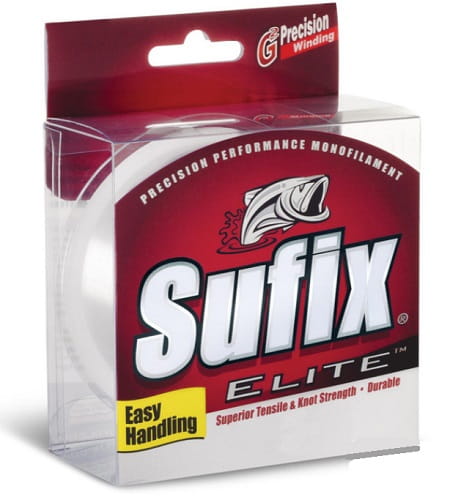
Popular Choice
Sufix Elite Line
Sufix Elite is a Premium Monofilament Line that many Centerpin and spin fishing float anglers use and like.
It has good strength, good handling, and durability. It also has three good colors to choose from. It is a popular and proven line that I recommend, especially if you are using spinning reels or baitcasting reels.
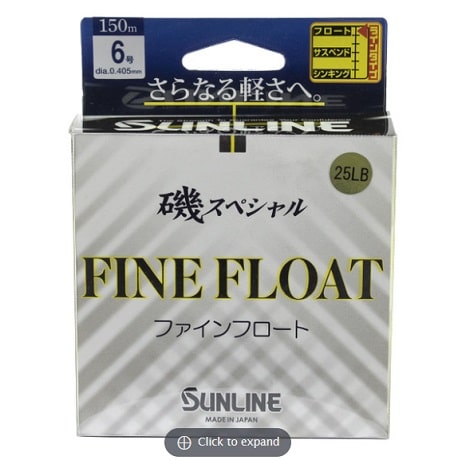
Sunline Iso Special Fine Float Line
Long Time Favorite
Sunline has been a favorite of many float fishing anglers for a long time because it’s buoyant. This new upgraded version uses a special technology that really helps it float, which is a big reason why many good Centerpin anglers use it.
P-Ion technology gives the floating line slickness, water repellency, color, and hydrophilic properties.
It has good strength, good handling, and durability. It also has three good colors to choose from.
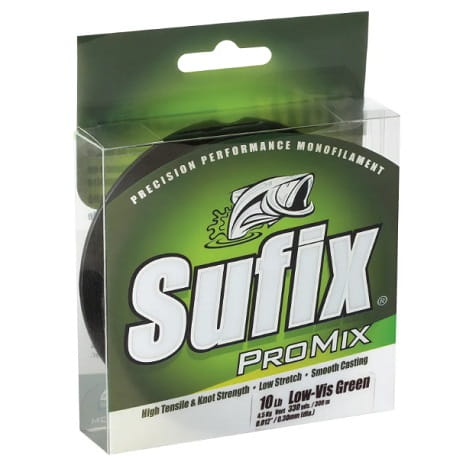
Good Choice
Sufix Promix Fishing Line
This is another line that many float anglers love. It’s supple and sits well on the reel. In online forums, this is recommended by many guys as a good Centerpin reel and spinning reel line that works great for float fishing.
Some of my clients have had good success using this line on a Centerpin reel if they use the 8-pound or 10-pound line sizes. It floats well, casts nicely, and is a good choice for Centerpin fishing.
Braids and Super Lines
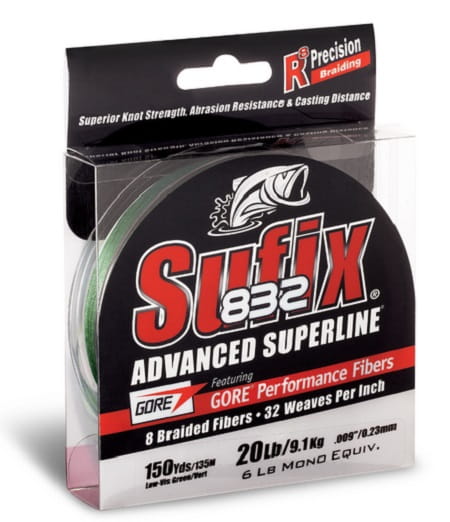
If you do decide you want to use a braided line to float fish, these are the three best lines to try.
Backing For Centerpin Reels
If you’re setting up your Centerpin reel for the first time you will need backing to fill the bottom of the spool. Generally, about 200 yards of backing and about 200 yards of mono around 8lb should fill up your Centerpin reel nicely.
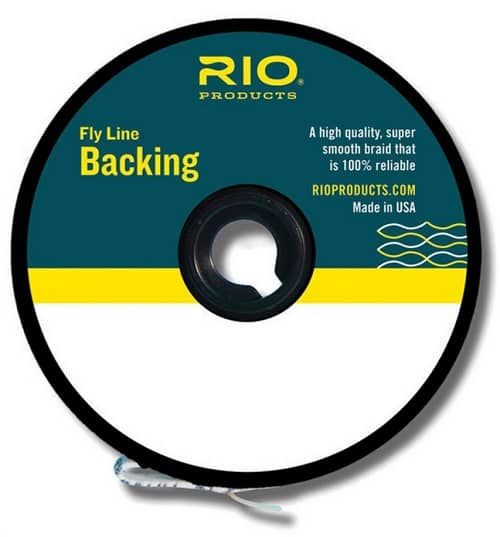
Backing For Centerpin Reels
Rio, Orvis, or Cortland brands are the best backing lines that I use to fill about half the spool of the Centerpin reel before I add the main Line.
Check These Retailers For Best Prices:
Is Braided Line Good For Float Fishing?
Braided line is good for float fishing because it’s buoyant, it is very thin, it’s strong, and it’s abrasion-resistant, and it has little to no stretch, which is great when setting the hook at a long distance.
The primary advantage of using braided lines when float fishing is that it is very strong while still being very thin.
Another great advantage of using braided lines for float fishing is that it’s the best line I have ever used when setting the hook on a float that is 100 feet or more down the river because the line doesn’t stretch, which that gives you a solid hookset.
Braided line does have a few disadvantages.
- Anglers tend to break off more fish on the hookset when in close simply because it has no stretch to cushion the hook set.
- Some anglers will break more fish off during the fight for the same reason.
- Another issue that is common with braided lines is tip wrap. Tip wrap is when the line gets wrapped around the tip of your rod, and this can happen when you reel the line in if you wiggle the tip a lot. It can also happen on hook sets, which is a big problem if you have a big steelhead on the end of the line.
- Braided line will freeze solid if it gets wet when winter fishing in below-freezing temperatures, especially if you submerge your reel for some reason. Once it freezes solid you will have problems with your drifts all day.
- Some braided lines tend to absorb more water, which can make them sink, which is not good for hook sets and for the presentation of your bait. A line that absorbs water is more likely to freeze, or it will cause more ice build-up on the rod guides when fishing in below-freezing temperatures.
I have an article on winter fishing, which talks about how to keep the guides from freezing if this is ever an issue for you. I also provide tips on how to stay warmer and comfortable even in the coldest conditions.
Fishing Line Color For Float Fishing
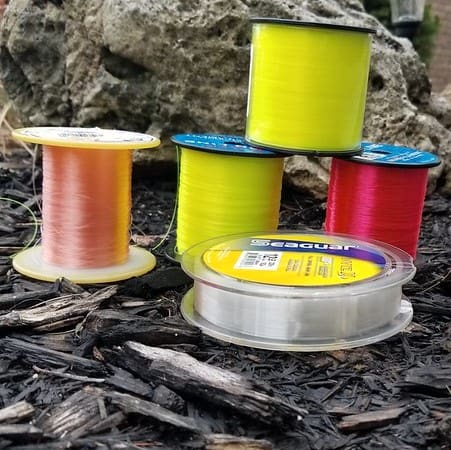
Line for float fishing comes in many different colors, and many anglers will have different opinions on which color they prefer. There are advantages to a brightly colored line, and I prefer bright colors like yellow and orange.
Clear or green lines are also popular with a lot of anglers, and they use them because they believe that colored lines can spook the fish. But do they?
Colored Lines For Float Fishing Are Better
I believe that bright-colored lines have more advantages than clear or green lines, especially as a beginner. The main advantage of a bright-colored fishing line is that it makes it easy for you to see the line, so you can manage and adjust it better when needed.
- Bright lines are also much easier for other anglers around you to see, so they are less likely to cast near or over your line, and you and they can follow your line down to find your float easier.
- Bright colored lines to help teach anglers about proper line positions as well as mending. I always struggle to teach anglers how to float fish well when I can’t see their clear line.
Can Fish See Colored Lines?
Fish can see colored lines, especially in clear water with slow-moving baits, so it is always best to use a leader that is long enough to keep the colored line far enough away from the bait that the fish don’t see it.
Float Fishing Setup For Colored Lines
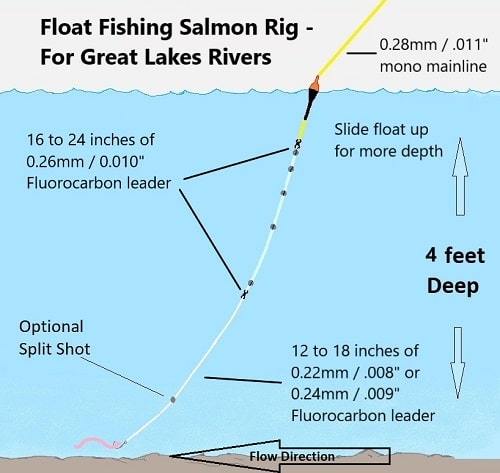
One of the reasons anglers do not set up the leader properly is that many older and some popular float fishing sites have leader diagrams that recommend putting the split shots on the colored mainline, which runs down to a short leader that your bait goes on.
This is not the ideal way to set up a leader for float fishing.
If you make the mistake of putting your weights on the colored mainline with only a short fluorocarbon leader, then the colored line is too close to the fish and will likely spook them. This can even happen with clear lines.
If you use what I call a shot line on your leader, you can use bright-colored lines without spooking the fish because it keeps the colored line far enough away from the fish that they will never see it.
With the proper leader setup, you will get all the benefits of the colored line without spooking the fish.
Whether you use a colored line or not, you should use a leader that is 3 feet or longer and made from fluorocarbon.
Click the link to see the shot line and the leader setups that I use when guiding trout, steelhead, and salmon. These are proven to be the most effective leader setups that you can use.
Buoyant Float Lines Are Best
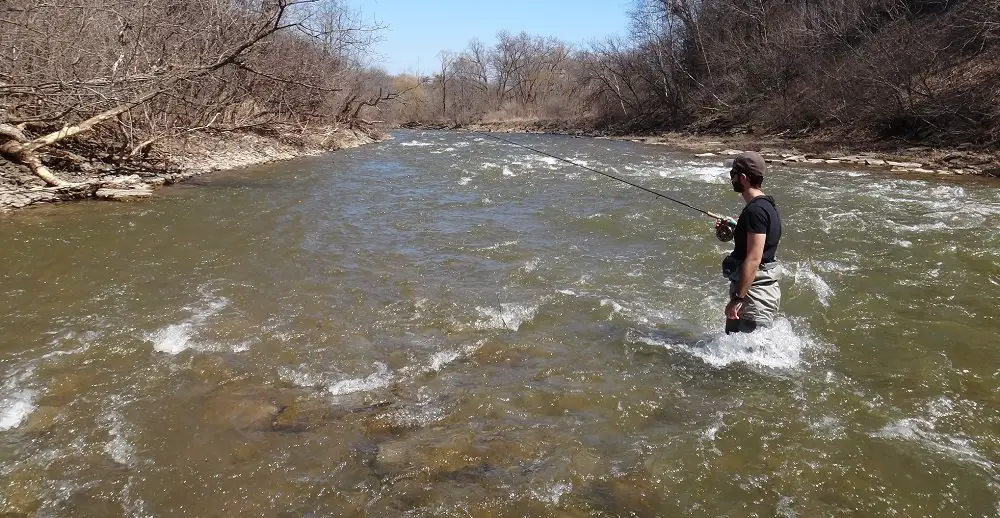
Some float lines are heavier than others and should not be used, or you might have problems. Fluorocarbon is known to be a denser line, and it sinks, as do some copolymer lines, and even some heavier monofilament lines sink.
The best lines for float fishing should be strong but also as thin as possible, and they should float or be neutral buoyancy. Thicker, heavier lines sink!
When the line floats, it can easily be mended if needed. A floating line doesn’t get dragged around by the current as much, which can pull the float in an unwanted direction, and your hook sets are easier because your line lifts up off the water better with a floating line.
What Pound Test Mainline Should You Use For Centerpin Fishing?
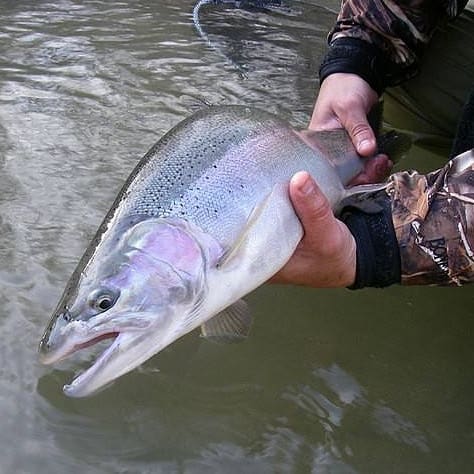
Your line size or diameter matters a lot. I have seen guys come out with heavy lines that affected their ability to get proper drift, and they struggled to catch fish.
I have been testing lines and line sizes for over 35 years, and I always recommend going with as light a pound test for your mainline as possible.
- Thick and heavy lines do not cast as well or as far.
- Thicker lines are stiffer and don’t come off the reel as smoothly.
- Thick lines sag between the float and rod tip, and you don’t want this.
- Thick lines will sink more.
- I have also noticed that thicker lines tend to tangle more often.
You do not need a heavy line if you run light leaders. There is no point running 16-pound mainline for steelhead if you need to use an 8-pound leader just to get them to bite consistently. Your mainline should be one or two sizes bigger than your normal leader diameter.
Many of my hardcore steelhead buddies will actually use a float fishing mainline of 6lb test because it casts better and tangles less. See the chart below for a guide on what pound test line you should buy.
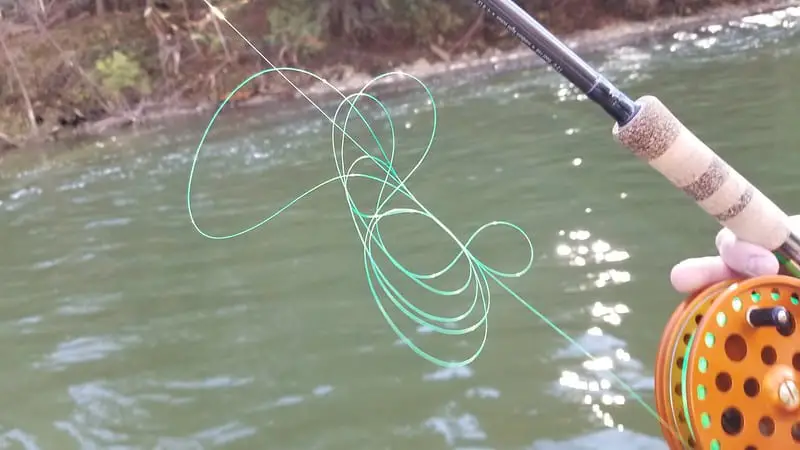
Why does the leader matter? The leader is a critical part of your setup. If you use a leader that is too thick, the fish will see it. If you use a leader that is too thin, the steelhead will just keep breaking you off.
I have also been testing leaders for over 35 years, so I know exactly what works for me in all conditions.
I discuss line sizes in more detail on my page, What Pound Line Is Best For Centerpin Fishing.
Sizing Table For Float Lines
Type Of River | Steelhead | Salmon | Trout - Under 5lb |
Large - Fast and Slow | 10lb test | 12-14lb test | 8lb test |
Medium sized rivers | 8lb test | 12-14lb test | 6lb test |
Heavily Wooded | 10lb test | 14lb test | 8lb test |
Small Creeks | 8lb test | 12lb test | 6lb test |
Pier / River Mouth | 10lb test | 14lb test | 6lb test |
Multi-Purpose | 8lb test | 12-14lb test | 6lb test |
How Much Line To Put On A Centerpin Reel
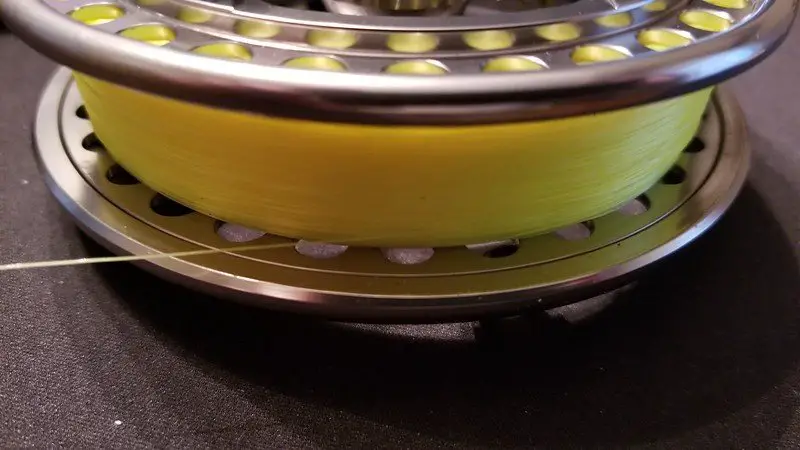
How much line goes on a Centerpin reel depends on the reel. Some reels have different size diameters and hold more or less line.
This picture shows one of my guide reels that is just slightly below the full amount. You can see the gap between the spool, and the base is a little over 1/8 of an inch to the line.
The first thing you want to do is fill the Centerpin reel about halfway with a fly line backing. Then, add the mainline to about 1/8 inch from the inside gap of the spool and the base of the reel.
Depending on your reel, this will be about 200 yards of backing and about 200 yards of mainline. See the backing that I prefer to use below.
The backing I use is the Cortland backing from FishUSA.com
Use The Same Fishing Lines That Experts Use
Whatever line you use for float fishing, make sure you use one that has been used and tested by other anglers who actually know what they are doing. I have a lot of buddies, and I know other guides that all float fish and they all tend to use these same lines, and you should, too.
Got A Question Or Comment About The Best Lines For Float Fishing
If you have a question, comment, or suggestion about what flaot and Centerpin fishing line works for you, let me know in the comment section below.
Tight Lines,
Graham

Hi Graham,
Thanks for taking the time to write such informative posts, I have started fishing for Salmon and steelhead last fall and learn’t a lot form your site.
I had a question regarding choosing fishing lines,I have been using Raven 8lb as per your recommendation .
After reading a few reviews I realized that a lot of people claim that the Siglon ff2 floats higher and is more hydrophobic than raven line and is more supple(less memory/coils & twists).
I wanted to know if this was true in your experience?(I don’t mind the extra $ for Siglon)
I have used both lines and didn’t find a significant difference between the two, or should I say I didn’t find that the Siglon worked any better. The Raven line works and I have caught thousands of steelhead with it with no issues even at long distances and with lots of line on the water.
With many fishing products, you will have fans of one product over another, and what some guys like others won’t like. In many cases, I think it’s more of a personal preference than anything. The only way for you to tell which you prefer is to try both, or if you already have Raven on the reel and it works perfectly for you just stick with it.
Good Luck
Graham I just found your site a few weeks back. I cant thank you enough for your tutelage. Your way of conveying information is fantastic and I’m really excited to get on the water and practice what you have taught and will continue to teach me. By chance do you have any videos i’m not seeing on float fishing?
All the best.
AJ. Cold Spring , NY.
Hey Allen,
I’m very glad you enjoy the website. I have always said what I enjoy most about guiding is the teaching part and this website allows me to teach more people like you.
You haven’t missed any videos yet, Tutorial videos will be coming soon and I hope to film this spring and have them up on the website by the summer.
Good luck this spring
Graham
Hi Graham,
I just want to say thank you for creating this site. I had a couple of trips straight without a single hookup and was frustrated. Started to google some tips and found your site. Since then my last two day trips have lead to double digit hookups.
–
I have to clarify I am understanding this because there maybe some inconsistencies. Best set up for normal flow medium size river with a centerpin reel would be .28 main line and .20 leader?
Hi Anton,
The mainline will depend on the maximum size of your leader that you might use. Occasionally I will go up to a 0.24mm leader in heavy wooded water or very fast flows or big water. Therefore, a 0.26mm or even a 0.28mm would be ok if your leader remains .24 or under. I use Raven 8lb mainline which is 0.26mm for 99% of the steelhead fishing which includes rivers that are 60 to 120 feet wide and i am able to walk the river bank… For me the mainline also depends on whether I can walk the bank and chase fish if I need to. If I can’t chase them, I will go heavier on the mainline and heavier on the leader.
Hope that helps
Good Luck
Graham
Any thoughts on P- line Top Water (copolymer?).
Thanx fer takin the time and trouble to disperse all yer hard-won wisdom.
Great site, excellent how-to articles.
I’ve been fishing a medium sized, glacial river in Washington state for fall chinook. Tryin to learn to float fish.
In two years have only hooked two fish, landing neither!
The river has a few deep spots, quite a bit of heavy current, runs almost clear until after the first rains the visibility goes down to one-to-three feet for most of the season. It is also woody/snaggy.
The river has limited access, can only fish river miles two to six (from the mouth, salt water).
Most of the fish are eight to twelve pounds with occasional ones to 30 pounds.
I usually use 30 pound Power Pro braid in hi-vis yellow with a sliding torpedo float, 11 gram to 30 gram in- line sinker and a two to four foot leader. I have sometimes been threading the leader thru a short piece of one-eighth pencil lead with a bobber stop 12 inches up from my lure.12 inches up from my lure. (Due to anti snagging reg.s weight cannot be closer than 12 inches) to get down faster in some of the swifter water.
Speaking of fishing reg.s, we are also limited to one single point, barbless hook with hook-point to shaft no more than one-half inch, which usually equates to a size 2/0 or smaller.
I’ve become incredibly frustrated and planned on fishin other rivers but the price of gas has virtually chained me to this one river.
Any tips or trix fer fishin this kind of water will be greatly appreciated.
Most of the salmon that I’ve seen hooked were by “flossers” and ol-timers fishin roe neath a float.
Take care n tight lines
Hey Roger,
Sorry for the delay, your message went into the spam folder.
Unfortunately, I’m not familiar with P- line Top Water copolymer lines so I can’t say for sure.
This is hard to explain, but I will try. One of the things I teach my guides, and sometimes my clients, is to locate travel routes, concentration spots, and holes.
I would tell my guides to go out to the river during the lowest and clearest water times and locate all the depressions, holes, and trenches in the river. Also look for nasty wood and snags so you can avoid them when the water is up. And also look at where the high spots are… Then try and remember all of that so when the water is higher and dirtier you can go fish them.
I’ve even marked the banks where these depressions and trenches start and end, so when the water is high I can still find them. I’ve used ribbons or spray paint.
When the water is very low may see high spots in the river where the rocks and bottom are high and dry in the summer, and it shows you where the deeper water squeezes through. When the water rises 3 feet and gets cloudy, the fish will still stick to that deeper section and avoid that high spot, this is both a travel route and a concentration spot.
You can do this on many rivers during low water, see where the deepest water is, that is often a travel route, even when the water rises, fish will often tend to stick to the deeper sections unless they are too fast.
Other concentration spots are areas like islands, where the fish will often use one side or the other. Or seams where the fast water and slow water meet. The base of rapids is another concentration spot.
Those deeper trenches you found during the low water will often be a travel route or a holding area when the water is up.
I fish a river that goes dirty and is hard to see the bottom once the river rises. Most of the river is flat and visibly featureless. But because I know where all the snags, and trenches and little holes are, I can have my clients fish these little areas, These are areas that to the untrained eye look just like the rest of the river. 99% of guys walk by these little spots becuase they don’t see them.
I will be doing an article on travel routes, and reading the water, and concentration areas, and hope to have it completed by Nov 2022 so check back often.
Lastly, be sure your setup and your presentation are bang-on.
Good luck,
Graham
Hi graham. Thanks so much for your knowledge and time. I truly have learned son much from reading your articles and applying what I’ve learned. I’m in buffalo ny so we have a ton of great steelhead brown trout etc fishing as you know. Do you prefer a fixed or slide float for your setup? Thanks again
Hey Brendon,
Very happy to hear, thanks, I’ve been all over those rivers near Buffalo, my fav is still the Catt and the Salmon.
I only use sliding or slip floats when fishing very deep rivers like the Niagara. Otherwise, I prefer a fixed float.
One of the issues I have found with sliding floats is with multiple hard hook sets the float stop can slide up a little each time, which sometimes guys don’t notice, which continues to make your float deeper, however, once I find the perfect depth I don’t want my float to change unless I purposely change it. This sliding can happen with fixed float but I use really tight flat caps so mine never move on their own.
Graham
What lb cortland backing should I get?
Thanks again for all the solid information on setups!
Hey Trent,
I usually go with 30lb, it fills up the space faster.
Graham
Float fishing kings with a baitcaster, would you still reccomend Raven 14LB?
Hi Andy, yes, 14 pound Raven mainline should be sufficient for most great lakes rivers, probably even overkill for the smaller tribs because I’d bet the true breaking strength of the Raven 14 pound test is closer to 20 pounds.
On the bigger faster flows out west, it might be better with 16 to 20 pound lines or braids of 30 pound.
Best of luck.
Graham
Hello Graham,
You suggest Sufix Advance Co-polymer line as a good line for centerpin reels in one of your articles. I have used this line on many spinning reels and even a few spincast reels and I love it! I was going to order some for my 1st centerpin reel, but something caught my eye. Sufix Advance sinks. Wouldn’t that be problematic for float fishing since it is not a buoyant line? It certainly does not sink like a rock, and I have had times when it sits on the surface of the water, but it definitely does not truly float.
Also, what diameter line would you suggest for someone who fishes for Chinook Salmon as well as Steelhead and lake run Brown Trout in the Great Lakes in all but the largest of rivers if they didn’t want to switch lines every time they wanted to change their target species?
Also thank you for your incredibly informative articles. I have fished all my life but I caught my 1st Chinook last week and 90% of the information I studied to do it came from your website. I don’t know who is hooked more, that Salmon, or me!
Hey Paul,
I don’t recall recommending Sufix Coplymer for Centerpin or float fishing, if I did it’s a mistake and I’ll look into it, thanks for pointing that out. I may have recommended it for other purposes or when float fishing around wood and rocks, I’ll look into it. I primarily use Raven Mainline and have been using it for about 10 years or more< i'm sure I have landed thousands of steelhead and salmon on it, but I also like the Sunline lines or braids. To be honest, not many lines actually float especially as they get dirty, some are just more buoyant than others and those are the ones you want to use. You also want a lightweight line so the line sags less between your rod tip and the float. I run 10 pound raven on my chinook/steelhead reels and 8 pound on me steelhead only reels. You may need to play the bigger salmon longer but heavy lines sag more so I avoid them except in the faster water. Happy to hear you are enjoying the website. I'm hoping to do Youtube video tutorials soon. Best of Luck Graham